I am using ggplot2 3.0.0 and gganimate 0.1.1. Here is a MWE:
library(ggplot2)
library(gganimate)
df <- data.frame(year = rep(2000:2010, each = 50),
value = rnorm(550))
ggplot(df, aes(x = 0, y = value, frame = factor(year))) +
geom_violin() -> p
gganimate(p)
This creates an animation where every frame looks like this
Whereas I would like each frame to occupy the whole plot like this
How could I go about tweaking my code to get this result?
EDIT
This is what I would like to produce, this time using the actual data have. I made this by manually stitching together each frame of animation but this way is not sustainable for more complicated plots so I wish to use gganimate instead.


